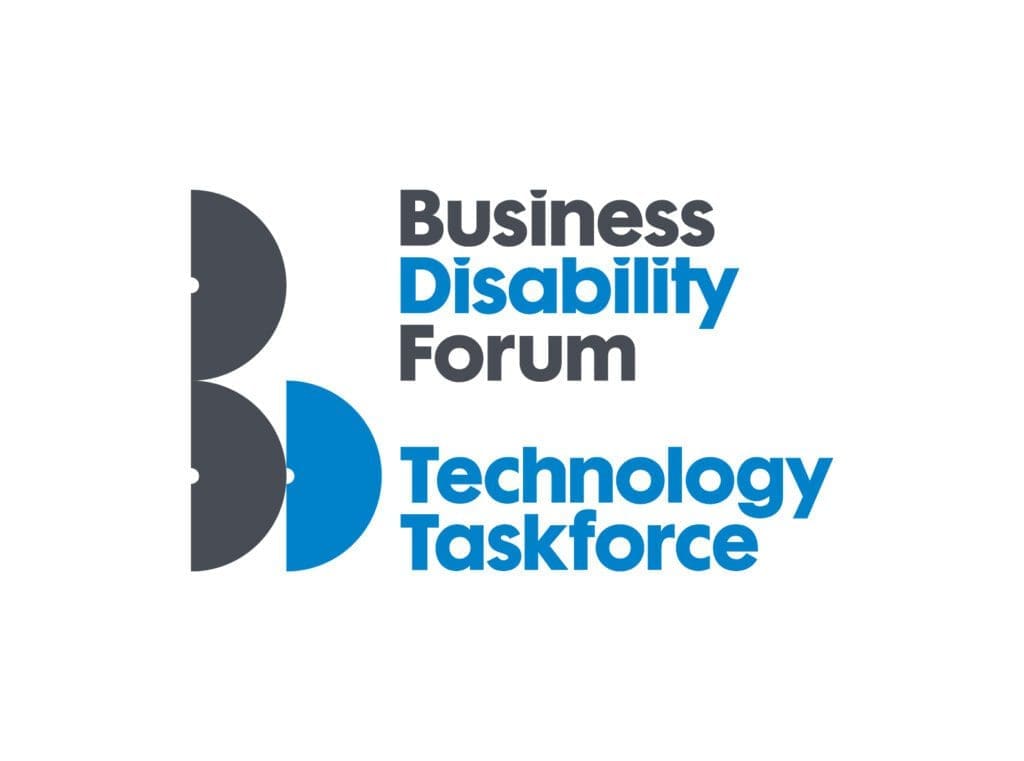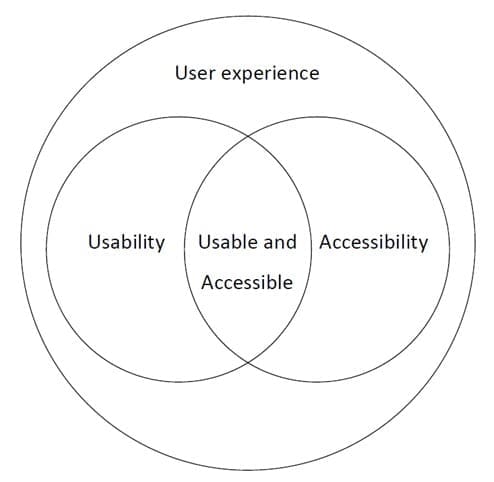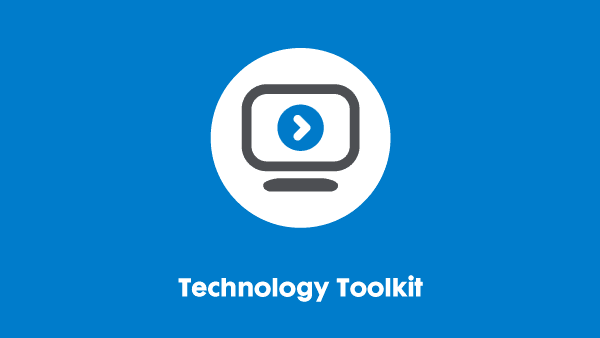Last updated: 20 September 2024
Promoting digital accessibility across your organisation
This resource was created by our Technology Taskforce, a group of senior IT accessibility individuals from leading UK and global organisations. For more information, including how to join, see our website.

Introduction
A Disability Smart organisation promotes digital accessibility across its business. It makes its employees and its customers aware that the company is committed to making their business accessible to all. It also shares what it is doing to achieve this. This guide talks about promoting digital accessibility: what it means, whom it affects and why you should do it.
What does digital accessibility mean – and why does it matter?
The World Wide Web Consortium (W3C) defines digital accessibility as when “websites, tools and technologies are designed and developed so that people with disabilities can use them.”
Together, accessible design and accessible development ensure:
- Direct access – disabled people can access the product or service without any help.
- Indirect access – the product or service is compatible with a person’s assistive technology(for example, computer screen readers).
The law
According to the UK’s Equality Act 2010, organisations have a duty to make “reasonable adjustments” for disabled employees, customers, clients and service users. Many other countries have similar laws.
For customers, clients and service users, this duty is “anticipatory.” This means that businesses think in advance (and on an ongoing basis) about what disabled people with a range of impairments might reasonably need. They must then make (or prepare to make) adjustments for them.
Organisations also have a duty to make reasonable adjustments for a disabled person who continues to experience barriers after anticipatory adjustments have been made. This applies to customers and employees.
Ultimately, digital accessibility is about ensuring that everyone can access your products, services and systems (both internally and externally), regardless of a disability.
Who does digital accessibility affect?
Digital accessibility can affect everyone.
For example, it could be about using a font that is big enough for most people to read comfortably, or a colour scheme that makes it easy for most people to see what is on the screen. It could also be about screen readers for those who are visually impaired and unable to otherwise see on-screen information, or those in bright light where glare on the screen makes it difficult for some disabled people to read.
For many disabled people, changes such as these will make the difference between using and not using your business. But they will also make the experience easier and more enjoyable for everyone.
So, digital accessibility means better access for all in any given situation, whether the barriers they face are permanent, temporary, or situational.
Everyone benefits from digital accessibility
Even if you don’t need accessibility tools, many people prefer them.
Take captions on screen as an example. Even those who don’t need them often use them, and they are commonly seen in busy workplace environments to watch news broadcasts or video clips that would otherwise be obtrusive and distracting.
If you provide documents, many people prefer the easy read versions of documents rather than the full versions. This including those who don’t speak English as a first language, or those who are ‘functionally illiterate’ (which the National Literacy Trust estimates at 16 per cent of the population). Readability statistics show how easy your document is to read, and you can use free on-line tools to check it. The tools analyse word and sentence length to produce either a ‘grade level’ (the US equivalent of a reading age) or a numerical value – each tool will define the meaning of its own rating.
Statistics show that a significant proportion of the public have a reading age of just 11 years old, as referenced by the National Literacy Trust. So, if your content is aimed at the maximum possible audience, that is the maximum readability level you should aim for.
According to the Click-Away-Pound survey, UK businesses lose £17.1bn every year because of accessibility issues. 69 per cent of disabled customers had clicked away from a retailer’s website because it did not work for them. Helping everyone in your business understand accessibility and act upon it can make you more profitable.
What is the difference between accessibility and usability?
These two terms are related, and there are areas of overlap between them.
- Accessibility is the degree to which a product, device, service, or environment is available to as many people as possible, regardless of disability or an impairment. Accessibility is about being inclusive to those with disabilities as well as those without.
- Usability is about the use of something by a particular target group of users.
While they are closely related, they address slightly different issues. Accessibility aims to increase the number of users who can access a system, this means remove any potential technical barriers that does not allow the user to access the information. Usability aims to make the user interaction more effective, efficient and satisfactory.
Example: Accessibility vs usability
A business wants to host a page on its intranet that lists the contact details of its roughly 100 team leaders.
From a digital accessibility perspective, the details must be legible by screen readers, and presented in a large enough font.
From a usability perspective, the contact details should be listed alphabetically, so that users can scroll quickly to the person they are looking for. This would benefit screen reader users as well, as they could find what they are looking for without having to have to listen to the details of everyone who appears before the person they are looking for.
Usability is achieved by a website, product or service that achieves a user’s end goal effectively and efficiently. This usually increases the user’s satisfaction with the experience.
It is a generally accepted truism that, if you make something accessible for disabled people, you tend to make it more usable for all. Take voice recognition technology – mostly developed for people with upper-limb mobility issues who have difficulties using computer keyboards. Now it is widespread in ‘virtual assistants’ like Siri, Alexa, Google Assist, and even in-car controls that let drivers adjust the radio or heating without taking their attention from the road.
Professor Mike Wald in 2017 provided a Venn diagram, indicated in Figure 1 below, that shows the overlap between accessibility and usability within the context of user experience.

Figure 1: An adapted Venn diagram showing the overlap between accessibility and usability and how this relates to user experience (Professor Mike Wald, 2017).
What does good digital accessibility look like?
Companies that want to be seen to promote and actively encourage digital accessibility do things like:
- Include digital accessibility as a standard – produce formal documentation available across the company that describe how to make things accessible and where to find guidance.
- Use inclusive terminology – on their websites, in their literature and their other forms of communication.
- Liaise with the relevant external associations – such as BDF, the Technology Taskforce or internal company groups such as disability networks, to achieve recognised standards.
- Sign up to the Accessible Technology Charter and use the Accessibility Maturity Model to gauge how they are doing.
- Achieve agreement across all functions/departments of the business about the need for and the business approach to digital accessibility.
- Achieve top-down sponsorship from the board/head of the business and align all business processes related to digital accessibility.
- Encourage their suppliers of technology to work to accessibility standards (for example, AA standard of the latest version of WCAG as a minimum).
The role of Senior Champions
Most importantly – you should have buy-in from the top. Promotion of digital accessibility should come from board level with an executive level IT accessibility champion and reach into every corner of your organisation. This can take time, but start – it will grow.
Depending on the size of your organisation you should seek champions from:
- HR / Recruitment
- Health and safety
- Procurement
- Corporate responsibility
- Employee resource groups
- Tech support
- Diversity and inclusion.
All of these can and should act as your champions, promoting digital accessibility across the business and out toward your customers.
Who does it well?
There are many businesses that are exhibiting best practice when it comes to promoting digital accessibility. Without wishing to single out individuals, we say that a business “does it well” when they:
- Build accessibility into the core of their operating system rather than as an adjustment – so you can do things like pinch and zoom / magnify anything, or turn on text-to-voice without the need for additional software. Where this does not meet the needs of the individual, ensure that it is compatible with more specialist assistive technology.
- Actively promote the accessibility of their products on websites, showing their commitment and giving examples of inclusion in action.
- Have an accessibility statement on their corporate site stating they comply with the latest version of WCAG AA standard as minimum.
- Have a service desk/help desk that can empathise with disabled customers and answer questions on accessibility and their products.
If you require this content in a different format, contact enquiries@businessdisabilityforum.org.uk.
© This resource and the information contained therein are subject to copyright and remain the property of the Business Disability Forum. They are for reference only and must not be copied or distributed without prior permission.
